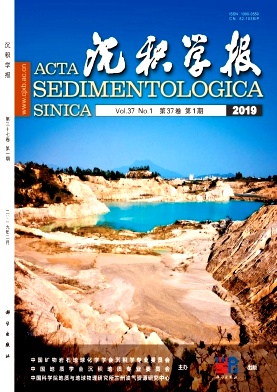Sediment Waves Characteristics and Origin of Taitung Canyon in Eastern Waters of Taiwan Island
doi: 10.14027/j.issn.1000-0550.2018.106
- Received Date: 2017-12-04
- Rev Recd Date: 2018-03-06
- Publish Date: 2019-02-10
-
Key words:
- Taitung Canyon /
- sediment wave /
- turbidity current /
- formation mechanism
Abstract: Based on numerous high-resolution seismic profiles, sediment waves are identified in the eastern waters of Taiwan Island, and their distribution, morphological characteristics, internal structure, and potential origin are illustrated. The sediment waves are located at the junction of the Taitung canyon with other canyons on the slope. The wavelength of a single waveform is 0.8-7.2 km, and the wave height is about 18-75 m, which is a northeast-southwest (NE—SW) distribution. Sediment waves located inside the bend section of Taitung canyon have characteristics of upward migration, their bottoms develop MTD, and the interior can be subdivided into lower transition units and upper wavy units. The sediment wave on the outside of the bend is characterized by vertical accretion, and there is no mass flow deposit at the bottom. According to the sediment wave geometry, the flow thicknesses across the entire wave field are calculated as 196-356 m, and the current velocity falls in the range of 15-21 cm/s. The morphological characteristics, internal structure, and distribution of sediment waves and our numerical calculations show that these sediment waves are turbidity currents. The development of the sediment wave field in east Taiwan is the same as that of the sediment wave field in southwestern Taiwan. It is the sedimentary response of the Taiwan orogeny. Turbidity sediments overflow in the bend section of Taitung canyon or in places of less topographical constraint, thus forming a sediment wave field.
| Citation: | LIU Jie, SUN MeiJing, GAO HongFang, LI XueJie. Sediment Waves Characteristics and Origin of Taitung Canyon in Eastern Waters of Taiwan Island[J]. Acta Sedimentologica Sinica, 2019, 37(1): 155-162. doi: 10.14027/j.issn.1000-0550.2018.106 |






 DownLoad:
DownLoad: